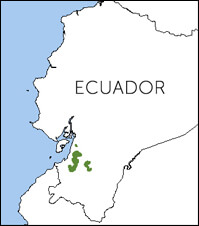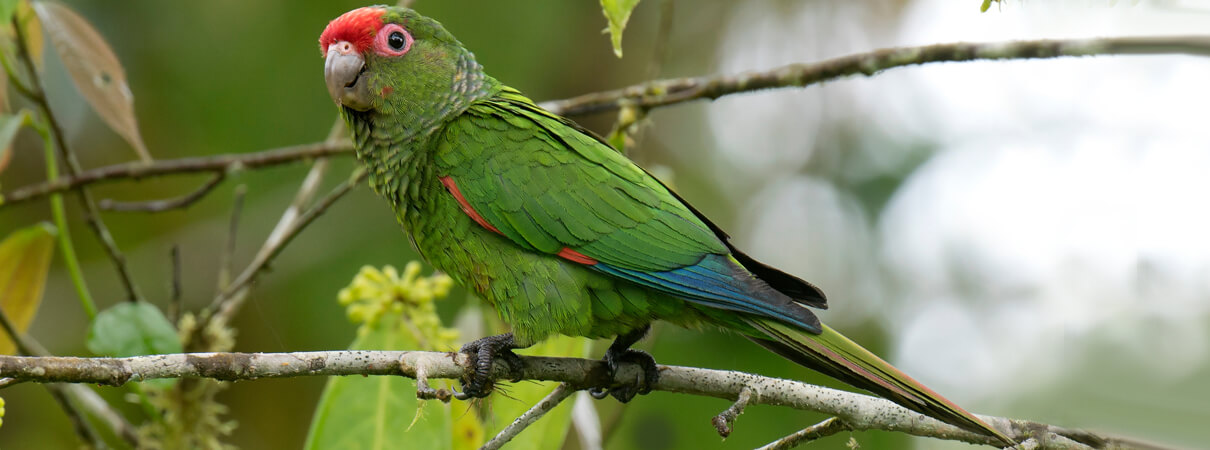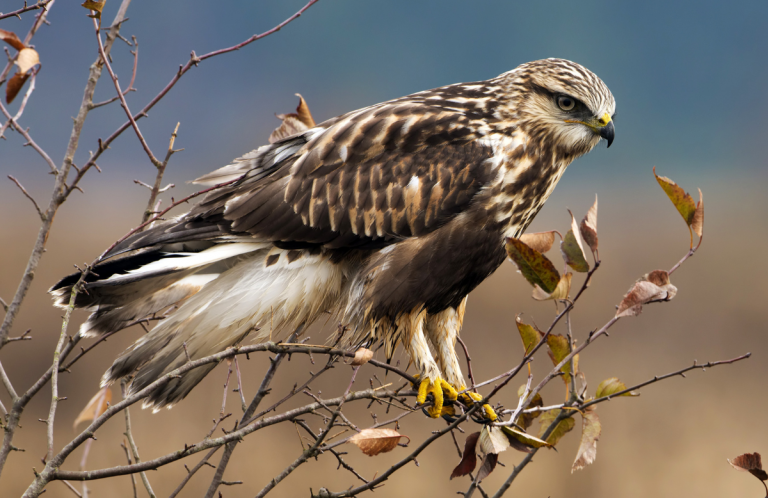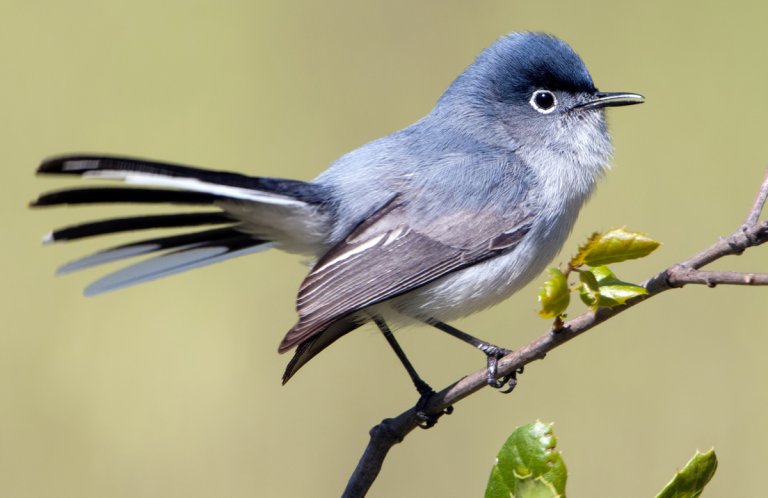 Although the eye-catching El Oro Parakeet is painted in bright colors, it managed to elude discovery for many years. Even rarer than the endangered Santa Marta Parakeet, this species was first discovered in 1980 and only officially described in 1988.
Although the eye-catching El Oro Parakeet is painted in bright colors, it managed to elude discovery for many years. Even rarer than the endangered Santa Marta Parakeet, this species was first discovered in 1980 and only officially described in 1988.
It is known from just a few locations along the western slope of the Andes in southwestern Ecuador, and the sole protected area for this species is the Buenaventura Reserve.
Threats to El Oro Parakeet
The El Oro Parakeet is threatened by habitat loss and fragmentation. Many suitable nesting trees are harvested for building materials and cut down to create cattle-grazing pasture, which may limit parakeet populations.
Loss of trees is not the only problem: Nesting at suboptimal sites may increase predation, including by other birds such as the Crimson-rumped Toucanet.
Parakeet Family Ties
Like others in its family, including the Golden-plumed Parakeet, the El Oro Parakeet is highly social, usually seen in groups of 4 to 15 birds. The birds are relatively inconspicuous when feeding in the treetops on fruit and flowers, but are easily seen when flying about in noisy groups.
Although much remains to be discovered about this parakeet's ecology, breeding appears to be communal, with incubation duties shared among several birds. The birds roost and nest primarily in natural tree cavities, with the main breeding season between November and March.
Sign up for ABC's eNews to learn how you can help protect birds

El Oro Parakeet by Agami Photo Agency, Shutterstock
Parakeets' Last Stronghold
The stronghold of the El Oro Parakeet is Ecuador's Buenaventura Reserve, established in 1999 by ABC partner Jocotoco Foundation. Now encompassing 5,816 acres as a result of acquisitions supported by ABC and others, the reserve boasts a lodge and trail system where visitors can look for the parakeet and other threatened species, including the Long-wattled Umbrellabird. (More information on visiting Buenaventura can be found here.)
In 2006, Jocotoco installed 39 nest boxes for the parakeets at Buenaventura. The artificial nest sites were accepted almost immediately by the birds and have been successful in boosting their declining population.
Helping to Save the El Oro Parakeet
In 2016, ABC worked with World Land Trust to support the purchase of a 233-acre addition to the Buenaventura Reserve. The acquisition expanded the reserve from 5,583 acres (2,259 hectares) to 5,816 acres (2,354 hectares) and contributed to the creation of an ecological corridor that will connect Buenaventura to three proposed government reserves, encompassing an area 56 miles long.
Donate to support ABC's conservation mission!



















































